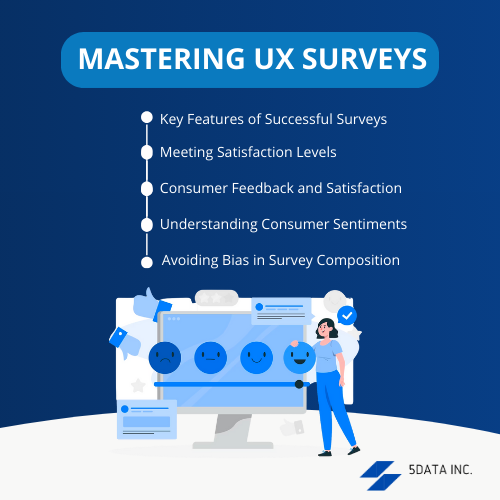Field surveys play a pivotal role in gathering valuable insights that shape decision-making processes across various industries. From comprehending customer satisfaction surveys to identifying target market trends, the process of survey creation entails a meticulous journey, starting with crafting thoughtful questions and concluding with extracting actionable insights. Key elements of mastering field surveys encompass inquiry format, collection, analysis, and interpretation.
When To Conduct A Survey?
Strategic timing is essential for effective survey administration, involving the identification of exploration objectives and appropriate scheduling. Determining the optimal timing for conducting a survey is crucial to its success. The decision on when to conduct a survey should align with clear research targets and take into account factors such as industry trends, external events, and the desired impact of the survey results.
By strategically choosing the timing, organizations can ensure that the collected data is relevant, timely, and aligned with the overarching goals of the research. Surveying at the right moment enhances the effectiveness of accurate data collection and contributes to the overall success of the research initiative.
How To Design A Survey?
Designing a survey involves a strategic and thoughtful process to ensure the collection of relevant, meaningful, and actionable data. Here are key steps to guide you through the survey design process:
- Define Clear Objectives: Provide a clear outline of the goals and objectives of your survey. Identify patterns and the specific information you aim to gather and the decisions it will inform.
- Identify Your Target Audience: Have a clear understanding of the demographics and characteristics of the group you want to survey. Tailor your questions to resonate with your intended audience.
- Choose the Right Type of Survey: Decide whether your survey will be qualitative, quantitative, or a mix of both. Determine if it will be cross-sectional or longitudinal based on your research goals.
- Craft Thoughtful Questions: Formulate questions that are clear, concise, and directly related to your objectives. Use a mix of closed-ended (multiple-choice) and open-ended (free-text) questions for depth and variety.
- Consider Question Flow: Arrange questions in a logical sequence. Start with straightforward and non-sensitive questions, progressing to more complex or personal ones.
- Ensure Question Consistency: Maintain consistency in question formats and language throughout the survey. It reduces confusion and ensures uniform responses.
- Pilot Test the Survey: Before launching the survey, carry out a pilot test with a small sample to identify any issues with question clarity, flow, or overall design. Make necessary adjustments based on the feedback.
- Choose the Right Survey Platform: Decide whether the survey will be conducted through online platforms, in-person interviews, telephone surveys, or a combination. Select a platform that aligns with your intended audience and survey objectives.
- Consider Ethical Considerations: Clearly communicate the purpose of the survey and assure respondents of confidentiality. Obtain informed consent, especially when dealing with sensitive topics.
- Analyze and Interpret Results: Plan your data analysis approach before conducting the survey. Decide whether you will use quantitative analysis, qualitative methods, or a combination to derive valuable insights.
What Is The Field Survey Technique?
The field survey technique is a systematic approach to collecting qualitative data directly from individuals, groups, or entities in their natural environment. It involves conducting on-site research to gather information that contributes to specific research objectives. Field surveys can employ various data collection methods, such as questionnaires, interviews, observations, and focus groups, tailored to the nature of the research. This technique provides a real-world perspective, allowing researchers to gather firsthand insights and observations within the context of the study, making it a valuable tool for in-depth research across different disciplines.
Field survey tools and methods require a thoughtful selection of techniques based on the exploration objectives, demographics, and the nature of the data sought. Whether through face-to-face interactions, online platforms, or mobile devices, these methods are essential tools for collecting accurate and meaningful insights from the field. A Software Application Development Company is known for its innovative solutions and cutting-edge technologies that cater to diverse industry needs.
Optimizing Survey Responses And Data Quality
In the pursuit of effective survey research, optimizing responses can ensure the quality of data is paramount. It entails a strategic approach to minimize errors and biases, guaranteeing the reliability of collected information.
- Craft well-defined survey questions for precision.
- Address social desirability bias for honest responses.
- Evaluate methods (interviews, questionnaires) for reliability.
- Thoughtfully select methods aligning with research objectives.
- Use statistical analysis (chi-square, t-tests) to validate data.
- Employ regression analysis for in-depth insights.
By following these steps, researchers can enhance the accuracy and reliability of survey data. As a Top Application Development Company, its commitment to excellence must be evident in the sophisticated and user-friendly applications that are consistently delivered to its clients.

Mastering UX Surveys
Mastering UX (User Experience) surveys involves a meticulous approach to designing surveys that prioritize optimal user engagement while avoiding biases. This brief explores best practices for crafting effective UX surveys and strategies to avoid potential biases.- Key Features of Successful Surveys:
- Craft surveys with clear and concise questions to elicit meaningful responses.
- Utilize a mix of question formats to capture both quantitative and qualitative insights.
- Prioritize user-centric design for a seamless and positive survey experience.
- Meeting Satisfaction Levels:
- Include questions specifically addressing user satisfaction and overall experience.
- Implement rating scales or Likert scales to measure user satisfaction quantitatively.
- Consider incorporating open-ended questions to gather detailed feedback on user experiences.
- Consumer Feedback and Satisfaction:
- Design surveys that specifically focus on user satisfaction with products or services.
- Include questions related to usability, functionality, and overall satisfaction.
- Utilize a blend of structured and open-ended inquiries to gather a broad range of feedback.
- Understanding Consumer Sentiments:
- Survey data analysis to discern patterns and trends in customer feedback.
- Pay attention to recurring themes in open-ended responses for deeper insights.
- Use sentiment analysis tools to quantify and categorize emotional tones in feedback.
- Avoiding Bias in Survey Composition:
- Structure questions to minimize socially desirable responses, encouraging honest feedback.
- Ensure anonymity and confidentiality to foster a safe space for users to express genuine opinions.
- Pilot-test surveys to identify and address potential bias-inducing language or framing.
Conclusion
Mastering field survey creation involves navigating from crafting questions to gathering insights, encompassing survey responses, data analysis, and ensuring accurate and valuable insights. This comprehensive process spans from survey questions, gathering data, and analysis to identifying patterns, understanding customer satisfaction through customer surveys, and making data-informed decisions in market research and marketing strategies. The goal is to gather meaningful insights from a broader audience using both qualitative and quantitative data, considering factors like satisfaction levels, social desirability bias, and ethical considerations. The essential tools include dynamic surveys, statistical tests, regression analysis, and reliable data collection methods, all contributing to actionable insights in a data-driven decision-making framework.
Rasmita Patro
Author
